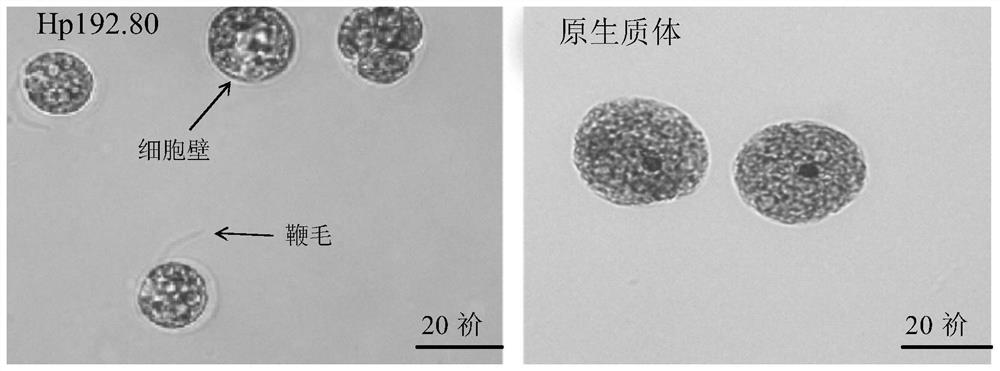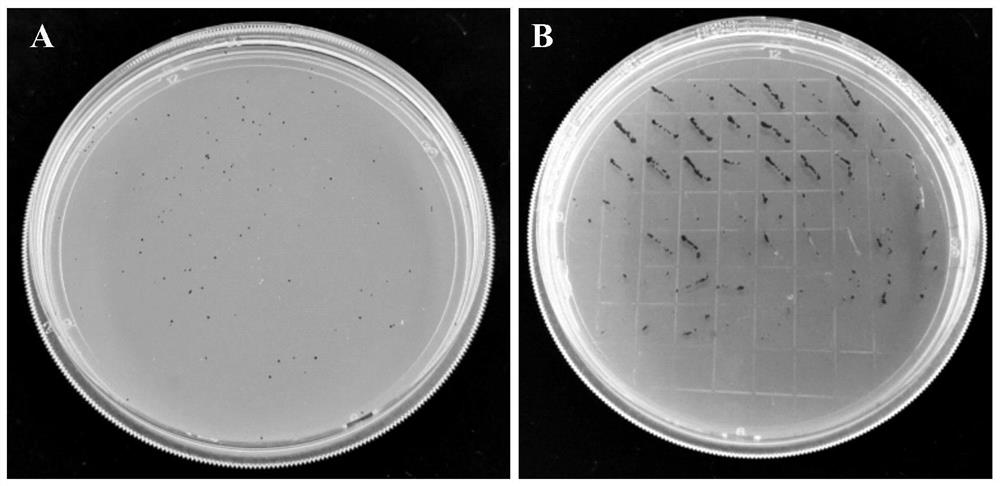A kind of genetic transformation method of Haematococcus pluvialis
A genetic transformation method, the technology of Haematococcus pluvialis, applied in the field of genetic transformation of Haematococcus pluvialls, can solve the problems of low positive transformation rate, low success rate, cumbersome operation, etc., achieve broad market prospects, long cycle, Avoiding the Effects of Cellular Stress Responses
- Summary
- Abstract
- Description
- Claims
- Application Information
AI Technical Summary
Problems solved by technology
Method used
Image
Examples
Embodiment 1
[0061] The present embodiment provides a genetic transformation method of Haematococcus pluvialis, comprising the following steps:
[0062] 1 Linearization of plasmids for transformation
[0063] The plasmid used in this example was pH124. The pH124 plasmid was extracted from Escherichia coli DH5α using Plasmid Mini Kit II (Omega Bio-tek, USA), the plasmid was linearized with restriction endonuclease Not I, and digested with Not I. The system is 30 μL, and specifically includes: 20 μL DNA solution, 2 μL Not I Fast Dicer (New England (NEB), USA), 3 μL Cutsmart Buffer (New England (NEB), USA), 5 μL water. The digestion temperature was 37° C. and the digestion time was 2 h to obtain a linearized pH124 plasmid with the DNA sequence shown in SEQ ID NO: 1, and the linearized plasmid concentration was about 1.0 μg / μL.
[0064] 2 Genetic transformation of Haematococcus pluvialis
[0065] (1) Collect Haematococcus pluvialis cells
[0066] The Haematococcus pluvialis cell selected i...
PUM
| Property | Measurement | Unit |
|---|---|---|
| strength | aaaaa | aaaaa |
Abstract
Description
Claims
Application Information
 Login to View More
Login to View More - R&D
- Intellectual Property
- Life Sciences
- Materials
- Tech Scout
- Unparalleled Data Quality
- Higher Quality Content
- 60% Fewer Hallucinations
Browse by: Latest US Patents, China's latest patents, Technical Efficacy Thesaurus, Application Domain, Technology Topic, Popular Technical Reports.
© 2025 PatSnap. All rights reserved.Legal|Privacy policy|Modern Slavery Act Transparency Statement|Sitemap|About US| Contact US: help@patsnap.com



